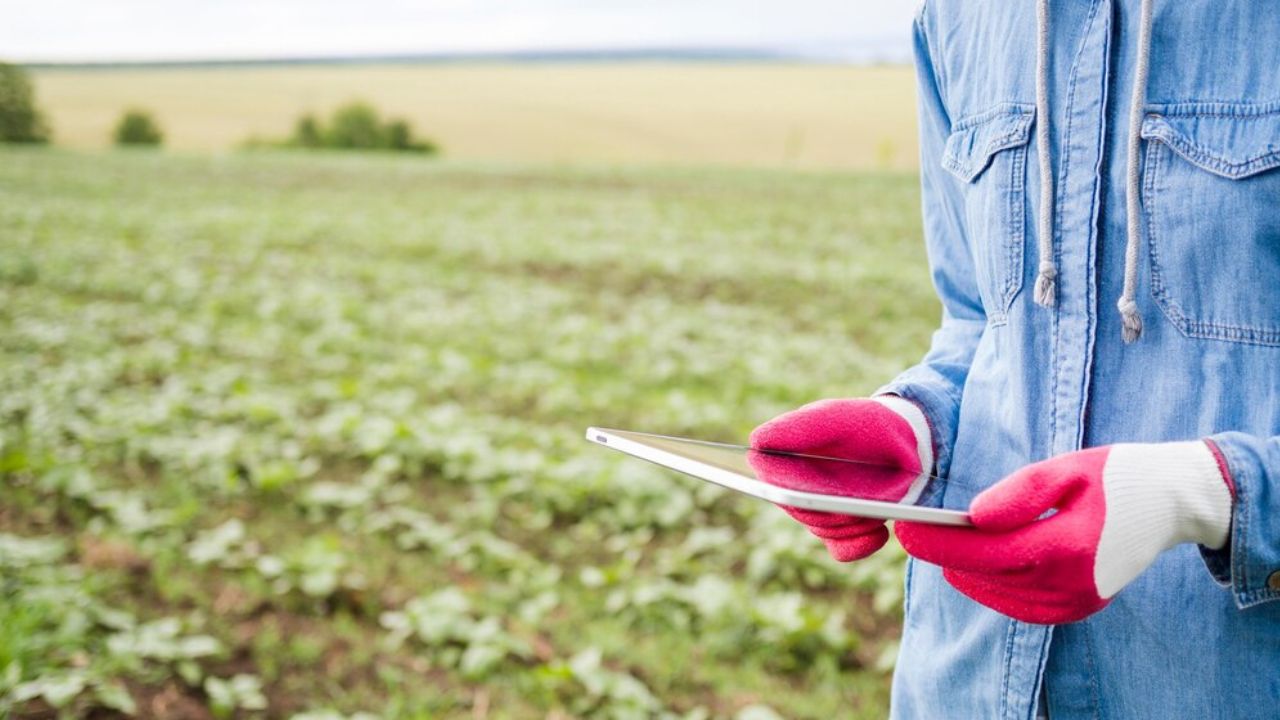BLOG
Safety rules ag tech wjms jackson county

Safety rules ag tech wjms jackson county are transforming the way we cultivate, harvest, and manage farms. From autonomous tractors to precision irrigation systems, these innovations improve efficiency and reduce costs for farmers worldwide. However, with the rise of new technologies, understanding and implementing safety protocols is more important than ever—especially in agricultural hubs like Jackson County.
This blog will outline key safety rules for using ag tech effectively, ensuring the well-being of farmworkers, protecting valuable equipment, and promoting sustainable farming practices.
Why Safety Is Crucial in AgTech
The intersection of agriculture and technology presents unique safety challenges. Heavy machinery, moving parts, and the integration of AI and software systems require farmers and workers to adopt both traditional safety measures and new, tech-centric protocols. Whether operating a high-tech drone for crop monitoring or maintaining an automated harvester, proper safety practices can prevent accidents, improve productivity, and protect the environment.
Jackson County, as a vibrant agricultural community, is no stranger to technology adoption. By adhering to safety rules tailored to AgTech, farmers here can future-proof their practices while safeguarding their workforce.
Top Safety Rules for Working With Agricultural Technology in Jackson County
Below are essential safety rules and best practices that should be on top of every farmer’s list when using AgTech in their daily operations.
1. Conduct Regular Equipment Inspections
Before using any ag tech solution—whether it’s an automated sprayer or a seed-planting drone—ensure that the equipment is in optimal condition. Regularly inspect critical components for wear and tear, proper calibration, and software updates.
- Tip: Schedule routine maintenance checks and keep a checklist to identify potential issues before they lead to equipment failure or injuries.
- Example: Monitor moving parts in autonomous tractors for jams or breakdowns, and make sure the built-in sensors are fully functional.
2. Train Workers Properly
Introducing advanced technology to your farm can only be successful when your team understands how to use it. Provide workers with comprehensive training sessions to familiarize them with operations, safety protocols, and emergency procedures related to specific technologies.
- Key Training Points:
- How to safely operate machinery (e.g., autonomous combines and irrigation systems).
- Proper response to software or mechanical malfunctions.
- Awareness of personal protective equipment (PPE) requirements.
- Example: Set up a hands-on drone operation workshop for monitoring crops, teaching both manual handling and troubleshooting.
3. Follow Manufacturer Guidelines
Every piece of ag tech comes with a manufacturer’s manual detailing how to safely operate the equipment. Adhering to these recommendations is vital for avoiding misuse and malfunctions.
- Common Guidelines:
- Maximum load capacities for machinery.
- Specific operating environments (e.g., temperature or terrain limits for drones).
- Timeframes for scheduled maintenance or part replacements.
- Pro Tip: Keep manuals accessible for quick reference, especially for complex systems.
4. Ensure Cybersecurity Measures Are in Place
Many modern AgTech tools rely on software, sensors, and data processing, making them potential targets for cybersecurity threats. Protecting your systems ensures they remain operational and no critical farm data is compromised.
- Best Practices:
- Use strong, unique passwords for all software interfaces.
- Install the latest software updates and firmware patches.
- Invest in antivirus and data encryption solutions for devices connected to your systems.
- Example: Secure your cloud-based crop management system to prevent unauthorized access or data loss.
5. Wear Appropriate Protective Gear
Physical safety still matters when working with agricultural technology. Workers should wear suitable PPE to protect against potential hazards, such as loud noises, chemical exposure, or mechanical accidents.
- Recommended PPE for AgTech:
- Hearing protection for operators of noisy automated machinery.
- Gloves and safety goggles when working with chemical sprayers.
- High-visibility vests to stay visible around moving equipment.
- Example: Always wear safety glasses when operating plant health sensors that emit UV light.
6. Create Emergency Response Plans
No matter how advanced the technology, unexpected incidents can still occur. Having a clear emergency response plan ensures your team knows what to do in case of accidents, equipment failures, or environmental hazards.
- Steps to Develop a Plan:
- Identify potential risks associated with each technology.
- Train workers on evacuation protocols, fire drills, and first-aid procedures.
- Keep emergency contact numbers readily available.
- Example: Develop a plan for equipment malfunctions, such as drones losing GPS signal or autonomous tractors stalling mid-field.
7. Implement Precision Technology Thoughtfully
Precision agriculture tools like smart irrigators, yield monitors, and automated sprayers are incredibly effective, but they require careful implementation. Misuse can not only lead to safety hazards but also harm the environment.
- Key Tips:
- Calibrate precision tools accurately to avoid over-application of water or chemicals.
- Monitor weather forecasts to schedule appropriate spraying or planting times.
- Use eco-friendly input materials wherever possible.
- Example: Program your irrigation system to align with soil moisture data, preventing water wastage and runoff.
8. Stay Updated With AgTech Trends and Regulations
AgTech is evolving rapidly, and staying informed helps Jackson County farmers adopt safer practices. Keep an eye on developments in both technology and local or national safety regulations.
- How to Stay Updated:
- Attend agricultural expos and trade fairs.
- Join farmer forums or local community groups discussing AgTech.
- Subscribe to industry newsletters and blogs focused on farming technology.
- Example: Learn about new AI-powered pest detection systems that can improve crop health while reducing chemical usage.
How Jackson County Supports Safer AgTech Practices
Jackson County prides itself on being a leader in agricultural innovation. Local initiatives focus on equipping farmers with the resources and knowledge needed to integrate AgTech safely and effectively.
- Ongoing Projects:
- Workshops on using drones for precision spraying.
- Training programs on the safe handling of autonomous tractors.
- Grants and subsidies for farms adopting eco-friendly AgTech solutions.
By leveraging these opportunities, Jackson County farmers can maintain their competitive edge while prioritizing safety.
Steps You Can Take Today
Integrating AgTech into your farming practices can be incredibly rewarding, but safety should always come first. Here are a few actionable steps to get started:
- Conduct a safety audit on all current equipment and processes.
- Contact certified trainers or professionals for team training.
- Invest in protective gear for your workers.
- Subscribe to industry updates to stay informed on tech innovations.
- Ensure your cybersecurity measures are robust.
If you’re new to AgTech or want more guidance, connect with local Jackson County agricultural experts or online AgTech communities for assistance.
BLOG
Above-Ground or In-Ground? Your Guide to the Perfect Pool Choice

When summer’s blistering heat becomes unbearable, nothing is better than having a cool pool to dip your toes in. Public and neighborhood pools can be unsanitary and crowded, and these nuisances often inspire homeowners to install their own. Before taking the plunge to add a pool to your property, one essential decision must be made: in-ground or above-ground pool?
While both are great ways to enjoy your outdoor space and escape from the heat, they each come with a unique list of pros and cons. Factors like cost, ease of installation, and property value must be considered before choosing your pool, as both types cater to different needs and preferences.
Above-Ground Pools
Pros
For homeowners prioritising cost-effectiveness and ease of installation, above-ground pools are a common choice. Their initial purchase price is generally lower, and the setup often requires less extensive work.
Many models are simple enough to be installed as a DIY project or, at the very least, with minimal professional help. These pools offer a cheap and readily available option for backyard swimming and come in various sizes, shapes, and styles.
Cons
However, it’s important to note that above-ground pools typically have a shorter lifespan than in-ground options, lasting between 7-15 years on average. Another downside of above-ground pools is that they typically don’t add any value to your home.
No matter how much money you spent on purchasing and installing the pool on your property, they are seen as a temporary addition and is therefore not included in your home’s appraisal. Some buyers might even perceive them as a detraction from the property’s overall appeal and a headache to deal with.
In-Ground Pools
Pros
In-ground pools are a permanent landscape feature that often provides a more luxurious and integrated look. With extensive options for customisation from the overall shape and size to the depth and added features like built-in seating, lighting, and even attached spas, they can be tailored precisely to your vision.
They tend to last longer than above-ground pools, with an estimated lifespan of 10-20 years. In-ground pools can also elevate your property’s attractiveness and increase its market value, making them a beautiful, personalised, and long-lasting addition.
Cons
When it comes to disadvantages, installing an in-ground pool entails a major construction phase. First, heavy equipment will be used to excavate the area, removing a large amount of soil. Subsequently, the pool shell is constructed using materials such as concrete, vinyl, or fibreglass. This is followed by installing necessary plumbing and electrical systems, and, finally, building the surrounding deck or patio.
Be prepared for this entire process to potentially take several weeks to a few months. An important factor to consider with in-ground pools is managing all the waste from their construction. Working with a temporary dumpster rental company is often the most convenient and cheapest way to handle this waste, keeping costs lower while maintaining a safe workspace.
Conclusion
In the end, the decision between in-ground and above-ground pools depends on your circumstances and priorities. If you prioritize affordability and quick setup, an above-ground pool presents a practical and enjoyable option. For those who are ready for a larger project and prefer a permanent, personalised feature that can boost your property’s appeal, an in-ground pool may be the perfect fit. Weigh your budget, the dimensions of your yard, your long-term homeownership plans, and your vision for how you’ll use your pool to make the best choice.
BLOG
What Factors Contribute to the NYU Acceptance Rate for 2025 Applicants? A Detailed Guide!

Are you planning to apply to New York University? Wondering what steps you need to take to secure a place for yourself in an undergraduate or graduate program? A student must perform exceptionally, from earning higher grades to writing essays, to study at this marvelous institute because the NYU acceptance rate is very low due to the thousands of applicants.
According to US News, only 9% of students can secure an admission every year. The reason behind this acceptance rate is that the selection criteria of NYU are very high, and students don’t start preparation for it years before. Multiple factors contribute to the decision of the admission committee.
In this guide, we will outline the key factors that this institute considers when deciding on an application from a student, whether he is from New York or any other country. The criteria remain the same for everyone. Let’s learn about these factors so you can be a part of the lucky 9%.
Important Factors Contribute to NYU Acceptance Rate – A Guide for 2025 Applicants
Over the last ten years, the applicants to the NUY institute has doubled. This application ratio is increasing year after year, not only within the USA but also from other countries. New York University states a 10% increase in applications last year, showing how competitive it is to get admission.
When applying for a specific program, you will need to write comprehensive essays, which are an essential part of the admission process. Without having an idea about what to include and exclude in these essays, your writing will not impress the admission committee. Professional writers recommend that students get expert help for these essays, especially when they are completing their current degrees and submitting final assignments.
For pending academic tasks, such as assignments, students can contact the UK-based assignment writing services to complete and submit them promptly without compromising quality. This help can allow you to focus on your academic success, which is vital in securing admission to any program at NYU.
To prepare you for the upcoming opportunity, here are some factors that this splendid institute considers when deciding on an application. Pay close attention to every factor for the upcoming educational challenge!
1. Academic Qualifications
The reason behind the low NYU acceptance rate for master’s degrees is academic qualifications. Students face rejection because their qualifications are not up to standard. Please remember that your educational documents are the most important papers in your application process. Usually, universities analyse your academic transcripts before moving to the next steps, such as reading your essays or conducting interviews. Therefore, these documents must impress professors or admission committee members.
Undoubtedly, the last degree obtained has a major role; however, you can’t ignore the importance of previous degrees, such as A and O levels. Low marks in any of these degrees can lead to rejection. In addition to these educational degrees, your diplomas can enhance your chances of selection. They show that you are dedicated and serious about a program.
If you have obtained a diploma related to your field, don’t forget to attach it to the application. Moreover, you can also add certificates that show your expertise or skills in a specific field. All these documents will pave the way to New York University. The last thing to remember is that the admission committee also examines your performance in the subjects you studied during the degree. Performing poorly in one subject and getting excellent grades in other subjects will not go in your favour.
2. Extracurricular Accomplishments
The selection criteria of NYU aren’t different from those of the top international universities. New York University follows the same criterion as 900 other institutions do when giving admission to local and international students. All these educational hubs pay close attention to extracurricular activities and accomplishments, which are often ignored by most students. According to an article published on the website of International School Ho Chi Minh City, educational institutes happily accept those students who participate in such activities and are eager to learn.
That’s the same case with New York University. The admission committee comprehensively look at extracurricular accomplishments. For example, if you are applying to the NYU Tisch School of the Arts and don’t perform in theaters or cinemas, the chances are high that you will face rejection. Most students don’t have such accomplishments when applying to this NUY School. That’s why Tisch NYU’s acceptance rate is low; applications are increasing every year, but the acceptance ratio doesn’t increase accordingly.
Here are a few tips for more extracurricular accomplishments:
- Let’s say you are a student of media studies. There must be journalistic organisations in your area or city. You can visit it regularly or submit an application to become a member. It will shine your resume and may positively impact the admission outcome.
- Choose extracurricular activities that are most relevant to your course. For example, you can opt for a free public service if studying humanities or gender studies. It will not only broaden your horizon of looking at things, but also you will not face issues when writing an essay for the admission process.
3. Work Experience
Work experience has the potential to turn your admission application into a success. Let’s say that you graduated from a well-reputed university a couple of years ago. Since then, you have been working regularly for local and international firms. Now, you think it’s a perfect time to pursue your master’s degree and submit an application to NYU.
On the other hand, a freshly graduated student also applied to the same program. The academic excellence of both candidates is the same. Who will be given an opportunity to study at New York University? It’s you because your professional experience distinguishes you from a freshly graduated student. Work experience makes professors and the admission committee believe that you are passionate about your career and now want to enhance your skill level.
Based on the importance of work experience, MoldStud states that there is a key reason why universities give much importance to it. When an individual applies for a specific program with solid work experience, the institute believes that they will apply their knowledge to the classroom, which will be beneficial for other fellows. It increases the satisfaction level of students, leading them to say positive words about the institute.
These are professional tips for you if you are doing a job and have plans to continue your master’s degree at New York University:
- Try to secure a position, whether executive or managerial, in a well-reputed company that will verify your experience letter in case this educational institute requires it.
- Learn all the essential skills relevant to your education or job description. It will help you shine your resume and make the admission committee prefer you over others.
- Focus on networking while serving a company. This networking can open doors to new opportunities, especially when applying for higher education.
4. Letters of Recommendation
The role of letters of recommendation can’t be overlooked in the application decisions made by educational institutions. Almost every well-reputed and highly ranked institute requires you to submit recommendation letters. They don’t only check these letters just for the sake of checking, but also learn about the professor or lecturer who is recommending you. Sometimes, universities, like NYU, ask you to get recommendation letters from PhD scholars.
You will need to focus on getting a letter accordingly. It’s recommended to get a letter from a professor who is a well-known scholar and has years of experience. Some students make a mistake and get a previously drafted recommendation letter from the education institute. This approach can lead to application termination at the initial level. Always focus on getting a customized recommendation letter that mentions your name, your strengths and attitude toward studies.
Moreover, don’t request your professor to exaggerate in the letter. Exaggeration can lead to issues at a later stage of the application process. Ask your instructor to add factors that they believe only belong to you. Customisation and originality in recommendation letters will present a clear picture of your academic journey before the admission committee.
5. Essays
Essays are also an important factor to focus on when submitting an application. Usually, students are busy completing their pending academic tasks, such as writing dissertations and essays. That’s why they don’t pay much attention to these application essays and ignore the guidelines. However, this approach can lead to rejection because an essay must be of high quality to get admission.
Some professionals believe that essays are the hidden reason behind the low NYU acceptance rate. The schools affiliated with NYU pass on instructions about these essays, such as what aspects to explain in detail and what structure would be perfect for a specific essay. You need to remember that every school has separate guidelines for essays; therefore, you will craft one accordingly.
What Is NYU’s Acceptance Rate?
As previously mentioned, the acceptance rate for New York University is 9%. The number of candidates is increasing every year; however, there is no significant increase in the acceptance rate. NYU is one of the most competitive institutions, where admission requires years of preparation. You need to appear in one of these exams, the ACT and SAT, to increase your chances of securing a position. Some students don’t get high marks in these exams, while others lack in professional work experience. That’s why the acceptance rate isn’t increasing as expected.
What is NYU’s Acceptance Rate by Major?
The NYU acceptance rate by major for 2028 was only 8%. New York University states that 118,000 applied for that year, showing how eager students are to study at this institution. Due to minor and major flaws in the application, most students don’t get a chance. This rate can vary according to the campus because this institute has three campuses in New York, Abu Dhabi, and Shanghai.
What is NYU’s Acceptance Rate for International Students?
The NYU institute doesn’t examine applications based on the identity of applicants. Every year, thousands of students from the USA and other countries apply for undergraduate and master’s degrees at New York University. The admission committee reviews every application and releases a press note about the ratio of successful applications. This press note doesn’t contain information about local and international students and their acceptance ratio. The acceptance rate at NYU can vary from school to school. Sometimes, we see a minor spike in acceptance and vice versa, the next year.
Why is NYU’s Acceptance Rate So Low?
NYU has been focusing on maintaining quality in education and research for years. It adopts a strict admission policy for national and international students. A student will only be admitted if he has excellent academic qualifications and higher extracurricular accomplishments. The admission committee also checks whether you have work experience or not.
Letters of recommendation also play an important role in the application process. Plus, a student also has to take an exam, such as the ACT or SAT and get good marks. Ensuring all these factors are met may help a student secure a place. However, most individuals fail to meet this criterion and don’t get admission.
Conclusion
You must have an idea now why the NYU acceptance rate is low for local and international students. A student needs to follow every guideline during the application process, from providing recommendation letters to writing admission essays. The admission outcome is heavily dependent on how well-written and structured these essays are. You will need to spend days on curating perfect essays as you will be seeking guidance from your seniors and getting help from your fellows.
Writing these essays may become challenging for you if you are working on your assignments to earn your degree. Working on these academic tasks will not be manageable for you, and even if you manage them, the quality of your writing will decrease. That’s why we recommend you get online assignment writing help to complete your assignments so that you can submit them on time and earn your degree, to continue your academic journey.
Author Bio
David Archer is an experienced assignment writer with expertise in completing assignments for undergraduate, graduate, and PhD students. He earned his Master’s degree from the University of Newcastle in 2014. Since then, he has been a dedicated academic writer, helping students to achieve excellence.
BLOG
Trending Plumbing Innovations: What Homeowners Need to Know

Introduction
In an age where efficiency and sustainability reign supreme, the plumbing industry has made remarkable strides to keep pace with modern demands. Homeowners can now access cutting-edge technologies that conserve resources and enhance their homes’ functionality. Understanding these plumbing innovations can help homeowners make informed decisions when upgrading their systems, thus improving their quality of life and boosting their property’s value.
Smart Plumbing Systems
Innovative plumbing systems are transforming how we interact with water in our homes. Integrating Internet of Things (IoT) technology, these advanced systems enable remote control and monitoring of real-time water usage. With brilliant showers and faucets, homeowners can adjust settings or receive alerts about potential leaks through their smartphones, maximizing water efficiency and preventing wastage. While the appeal of DIY solutions might be tempting, the sophistication of these systems necessitates the skills of professional plumbers. Their expertise ensures that installations are done correctly, mitigating the risk of costly errors.
Eco-Friendly Fixtures
As environmental considerations increasingly influence consumer choices, eco-friendly fixtures have surged in popularity for their water-saving capabilities. Low-flow toilets, motion-sensor taps, and water-efficient showerheads help minimize water consumption without sacrificing performance. These advancements reduce energy costs and play a significant role in protecting the environment, making them a smart choice for today’s homeowners. To achieve the best outcomes, these devices must be set up by experts who can guarantee effective integration with current systems.
Tankless Water Heaters
Tankless water heaters represent a significant shift from traditional heating methods. They offer instantaneous hot water without the need for bulky storage tanks. These systems only provide hot water when needed, reducing energy usage and creating more space. The durability and performance of a tankless water heater significantly rely on careful installation. Engaging a skilled plumber guarantees the unit is fitted correctly, preventing operational issues and enhancing energy savings over time. This professional touch is essential to capitalize on these heaters’ many benefits.
Leak Detection Technology
Contemporary methods for detecting leaks are pivotal for homeowners focused on safeguarding their residences against water harm. Sophisticated sensors installed within plumbing systems can identify leaks quickly, alerting homeowners before minor issues escalate into major problems. These technologies can save significant amounts of money on repairs and foster a proactive approach to maintenance. Employing professionals to set up and maintain these systems can prevent mishaps, ensuring the system runs efficiently and continues to protect your home.
Conclusion
The evolving landscape of plumbing innovations presents homeowners with remarkable opportunities to enhance their homes’ efficiency and sustainability. Today’s technologies offer significant benefits, from innovative systems to eco-friendly fixtures and tankless water heaters. However, the complex nature of these innovations underscores the importance of relying on professional plumbers for installation and maintenance. By entrusting these tasks to skilled professionals, homeowners can ensure their plumbing systems operate optimally, maintain value, and contribute positively to a sustainable future.
-

 BLOG10 months ago
BLOG10 months agoTacompton files: A Chronicle of Satire, Community
-

 TECH12 months ago
TECH12 months agoBunkr Album: An Ultimate Guide an Everything You Need to Know
-

 TECH11 months ago
TECH11 months agoSai Manimanoj Intellisoft Technologies: A Deep Dive
-

 FASHION12 months ago
FASHION12 months agoColor Lecrino: A Warm and Versatile Hue for Modern Design
-

 NEWS12 months ago
NEWS12 months agoWoodlake Condominiums News: Latest Updates You Need to Know
-

 BLOG12 months ago
BLOG12 months agoManuela Escobar: The Private Life of Pablo Escobar’s Daughter
-

 NEWS12 months ago
NEWS12 months agoDorsten Vs Fresno Pollution Coparament: Complete Guide
-

 NEWS12 months ago
NEWS12 months agoShari Ann Chinnis Indianapolis: Understanding the Viral TikTok Story
